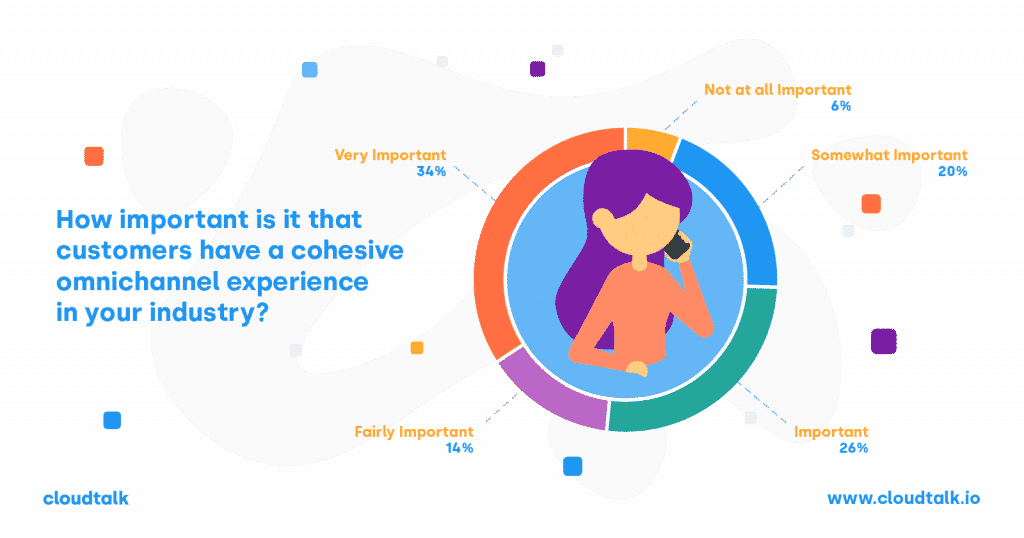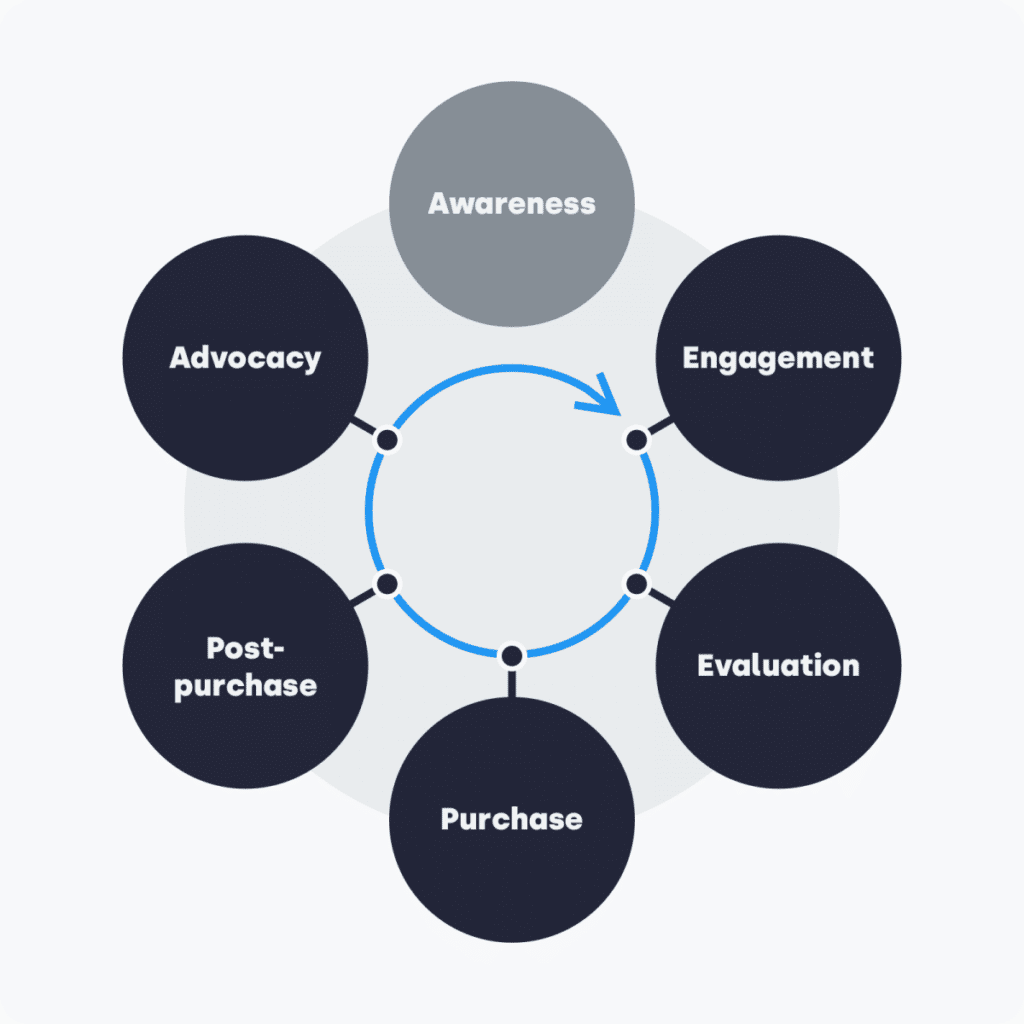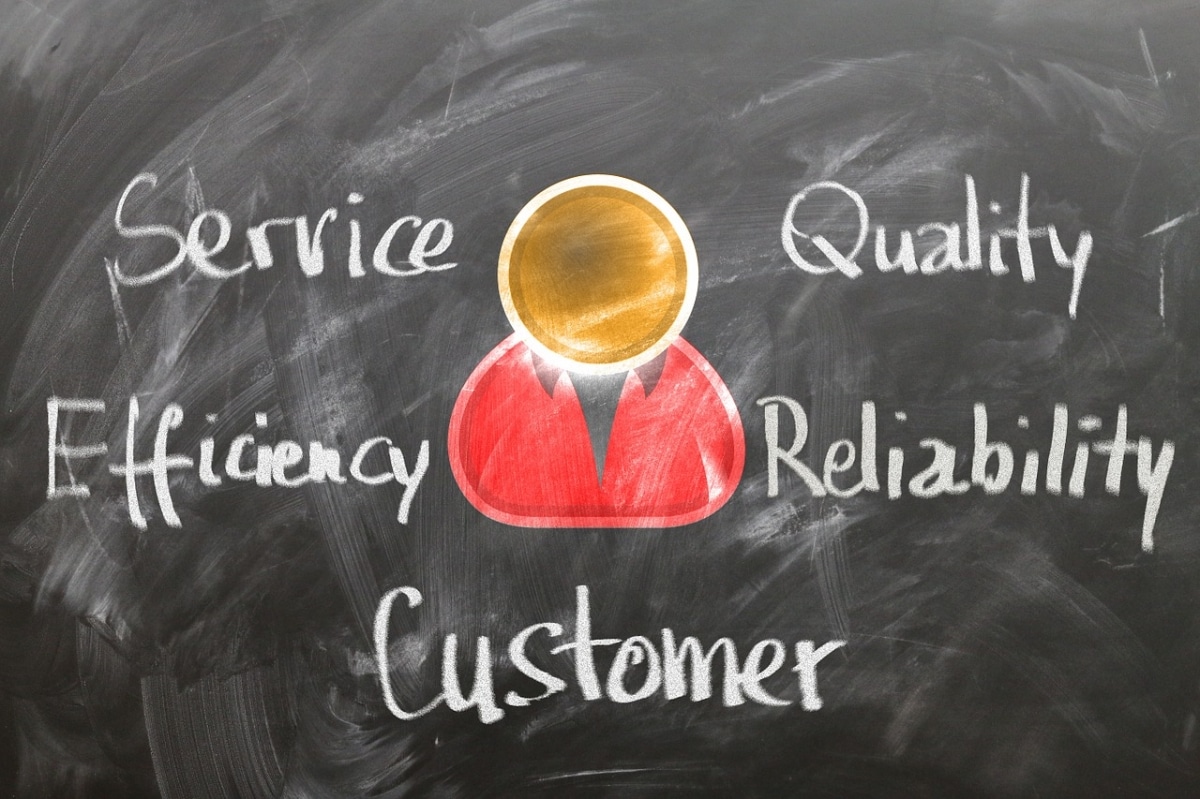
Whatever business you owe, it’s the customer who holds true power. In digital times, when consumers have countless choices on a tip of their finger, customer experience is more important than ever. An exceptional CX service helps your business grow.
It promotes loyalty and retains clients. In fact, a research conducted by American Express found that 86 % of customers are willing to pay more if they are treated well. On the contrary, 1 in 3 consumers have a tendency to leave a brand after bad interaction.
Now, let’s take a look at how you can improve the customer experience of your business.
Learn how to provide excellent customer service

What is customer experience?
Customer experience, also known as CX, focuses on the relationship between business and its customer. Each client who interacts with your brand gains an impression of your services that builds up throughout the whole buyer’s journey.
It can be triggered by anything, from the level of your website’s user friendliness or impression from your campaigns to talking with your customer service and evaluating the quality of your products.
Each customer experience usually stands on two legs – people and product. The key to success is quite easy – great satisfaction is built upon great performance of your product or service and a pleasant interaction with your employees.
Did customer support give your customers enough attention? Did they actually solve clients’ issues? Were they acting nice? This all matters. People are driven by emotions and how you treat them matters.
A difference between customer experience and customer service
To put it simply, customer service is a part of the customer experience journey.
As we explained, CX is an overall perception of your brand that customers gain in the long-term. Customer service refers to a specific, short-term contact within the customer experience, where a client asks for assistance or help regarding your product.
Therefore, customer service is just one piece in a complex customer experience puzzle. Customer service is often what follows when customer experience lowers.
How to trigger good or bad customer experience?
Good CX is easily recognizable – after a friendly interaction, customers act pleasantly and calmly. To trigger positive customer experience, you may need to use statistics for developing well-targeted, personalized marketing campaigns, make user-friendly websites by implementing the right web design workflow. Explore creative web design ideas to enhance usability, extract website data from your competitors, simplify the buying process, hire helpful and empathetic customer service and be available everytime client needs you.
On the contrary, bad CX leaves your customer disappointed and frustrated. It may be triggered by many reasons, from a product that doesn’t meet expectations to a customer support team that couldn’t resolve an issue. Yet almost each of these external reasons has deeper roots – poor level of understanding your customers’ profile – their pains, needs, likes and dislikes. Regular website health checks can reveal broken links, slow load times, or outdated content that may frustrate users and negatively impact their experience.
Main reasons of bad customer experience from
HOTJAR STATE OF CUSTOMER EXPERIENCE REPORT 2019
#1 Long wait/response time – 20 %
#2 Employee didn’t understand customers’ needs – 18 %
#3 Issue remains unresolved – > 18 %
#4 Not enough of human touch – 14 %
#5 Non-personalized service – 11 %
#6 Rude / angry employees – 7 %
Why is customer experience important?
There is literally no company on the market that wouldn’t benefit from an exceptional customer experience. Nowadays it’s importance grows fast. The Navigating Customer Service 2021 report shows that 60 % of consumers claim they care more about CX at post-covid times than they did before.
Also, according to Zendesk’s Customer Experience Trends Report 2020, 52 % of customers are thrilled to buy from brands that they’re loyal to on a long scale.
On the other hand, each negative experience lowers customers’ expectations and may have a drastic impact on your reputation. In the Zendesk Report, around half of respondents proclaimed that they would switch to a competitor after only one bad experience. In case the negative interaction happens more than once, circa 80 % of respondents would abandon your brand.
Therefore, with a top-notch CX, subscription businesses can increase retention and reduce churn, ecommerce may boost loyal custom and minimize returns, service industries gain recommendations and get much less complaints and so on.
Summary of CX key benefits:
- Increased loyalty
- Higher lifetime value
- Customer retention
- Better reviews and more recommendations
- Increased customer satisfaction
Stats about customer experience you need to know:
In November 2018, consultancy company Hotjar made a survey on 2 000 CX professionals from US, UK, EU, Australia and Canada about their customer experience strategies and goals. They divided the involved business leaders into 5 categories, from total beginners to CX “matures”.
Here are some Hotjar stats regarding those companies that considered themselves CX experts:
- Only 12 % of all company representatives identified themselves as “matures”.
- 37% of mature companies reported that delivering the most outstanding experience possible is their number 1 initiative.
- 25% of mature companies are spending more than half of their yearly budget on boosting their customer experience.
- 62% of mature companies scaled up their CX budgets by 5% or more.
How can you measure customer experience?
CX may look like a subjective concept that is complicated to measure, yet it relies on numbers, just as anything else. Here are the most common metrics on how to find out what is an overall impression of your customers.
#1 Surveys
Customer satisfaction survey is a very common metric that provides insights into improving customer experience. In fact, surveys were the top method for 17 % of mature companies from Hotjar research.
Surveys examples you can incorporate:
CES / Customer Effort Score: It measures experience with a product or service in terms of how “difficult” or “easy” it is to complete a certain action. It is usually used right after a customer interacts with customer service.
Example – “How easy was it to resolve your issue on a scale of 1: very difficult, 5: very easy?”
CSAT / Customer Satisfaction Score: This type of survey measures customers’ overall satisfaction with your service.
Example – “How satisfied were you with our services on a scale of 1: very unsatisfied, 5: very satisfied?”
NPS / Net Promoter Score: In this survey, you are asking people close-ended questions, for example about a possibility of recommendation.
Example – “How likely would you recommend our service to your friends on a scale 0 – not at all, 10 – definitely?”
#2 A/B testing
You can A/B test new CX efforts. For example, when integrating your customer service tool with an automation system, you may create two versions of emails to target customer segments.
#3 Churn identification
Another metric of customer experience success is rating churn and identifying its reasons. Analyze your churned customers. Notice whether your churn increases or decreases overtime, try to determine what can possibly be a reason and how you can use it in your favour.
#4 Analytics
Following analytics is also a great and easy way of tracking your performance. You can use tools, such as Google analytics or HubSpot, or gain data by integrating a software like CloudTalk with your CRM tool. This way, you don’t only see complex statistics, but may also use tools like read tickets or directly listen to customers’ interactions via call recordings. This provides you with truly deep insights into your CX performance.
12 Techniques to improve customer experience in your call center
Now, when you have a deeper insight into what CX is, why it is important or how to measure it, let’s explore how to actually improve it.
#1 Be more personal in emails
Nobody likes messages that seem “auto-generated”. These emails will very probably end up in spam or a trash bin. If you want to stand out as a company, you have to make customers feel special. This is one of the secrets of the big players – everyone wants to think that they are a part of something extraordinary.
Try to put more effort into delivering personalized emails to your clients. Address them by name. Remember their birthdays and send a special message on that day. They need to know that you care about them on a personal level.
Download our step-by-step buyer’s guide on how to choose the best call center software
#2 Provide high-quality customer support
Have you ever experienced an interaction with a business that completely lacked human touch? It might make you feel like you were a cog in an automated machine. You don’t want that for your customers.
As you have seen earlier, the Hotjar report showed that lack of human touch is a main trigger for 14 % of unsatisfied customers. Also, 21 % of mature companies from hotjar survey claim that they successfully overcame CX obstacles by improving the quality of their teams’ communication.
That is why, as another step towards perfectionizing your customer experience, you should make the customer feel pleasant.The support team must be always willing to help with real empathy and interest in the issue.
If you want customers to have a positive impression, your support team needs to have a positive attitude.
3 tips how can your support deliver memorable customer experience:
- Train your team to listen: To resolve customers’ issues smoothly and gain empathy towards their situations, agents first need to know what is the emotional state of the caller.
- Learn to speak customers’ language: First, you should go through your data and identify clients’ pain points to figure out how to speak to them. Secondly, don’t talk like a robot. Not even as a sales person. Simply lead a natural human interaction.
- Don’t let customers wait: As stats above prove, long waiting time belongs to top reasons that ruin customer experience. Answer customers’ requests as soon as possible. Try to be brief and fast during troubleshooting or other interactions and know your product, so there is a minimum need for consultation during the call.
#3 Use customer feedback for improvement
Customer support team should know what customers want. Collect their feedback, for example, by using the above-mentioned methods or trying something more extraordinary like making QR codes, and share it with them to provide you with their feedback. Find out what is their overall experience with support, website, product, service or a business. Look into customers’ expectations and the possibilities of how they may change overtime. Leveraging user-generated content (UGC) can provide valuable insights into customer sentiment and experiences. This authentic content, created by customers themselves, can be collected from various sources and even repurposed into compelling UGC ads to reach a wider audience.
This is how you can gain essential knowledge to let your company grow, reduce areas of friction and increase positive touchpoints.
Of course, this does not mean that all customer suggestions should be implemented. There is a fine line between trying to take feedback into account and blindly following everything the users want. Your intuition should tell you what is right and what is wrong. But it is important – to make them feel special – to respond to every feedback in a thoughtful way and explain if it is a good or bad idea and why. Of course, without trying to hurt anyone’s feelings.
If you take all the right feedback into consideration and improve your product accordingly, people will surely know that you are a serious, quality company.
#4 Develop personalized content
Non-personalized attitude is a 5th main reason for bad customer experience in Hotjar survey. That’s why a crucial part of making the user feel special is to provide them with personalized content.
Slowly create a really familiar place for users – the more they’ll visit your website, the more they’ll feel “at home” within your environment. That equals a loyal customer that keeps coming back.
Also, customers often prefer to solve issues on their own before contacting a live agent. That is why you should provide them with quality, data-driven content. Create help articles, success stories, blogs, brochures, e-books and other useful materials to push customers in the right direction.
#5 Make your contact details clearly visible
Contact details are often the main thing customers search for on your website. Make sure they give them this opportunity for example by sharing a digital business card with relevant contact details. It may leave an unprofessional impression if they cannot find them fast. You might just have lost a client.
Be one step ahead. Customers should see all contact information, such as address, email, and social media links right away, ideally when they come to your home page. Otherwise, if you don’t include contacts at all or hide them, it may seem like your business has something to hide. And you sure don’t want to look shady.
#6 Optimize your identity and website design
In general, your website should be easy to navigate. Also, it needs to be up-to-date and simple, yet contain all the necessary information. Using a website builder combined with custom web design and development can streamline the process, offering templates and tools that make it easier to create a user-friendly and visually appealing site.
The customer experience goes hand in hand with user experience (UX). Investing in quality design talent is a must. A UX expert will point out every little detail on the website that needs to be fixed.
A good designer can also help you with your identity. You need to have a consistent theme and a logo design for your brand that you use in all channels. Choose an appropriate yet eye-catching color scheme to stand out and be yourself among the plethora of other websites and products. Designers often use image editing software and AI tools such as AI logo generators to create and refine these visual elements.
Pro tip: One way to choose a perfect theme for your brand is to detect the Shopify Theme being used on a different site, and install the same theme.
#7 Make your call center more efficient
Although online rules the world, there are still plenty of people that prefer to call for help and support. That is why your call center needs to be as efficient as possible and stay in the forefront of attention.
Based on analytics data, you can use a lot of tools to boost your efficiency. For example, voice features. Try to segment your customers into groups. Therefore, you make them connect with the right person more easily. That means that problem is solved quicker and the customer is satisfied with your service.
#8 Emphasize mobile customer support
Mobile users are rapidly outgrowing desktop users – they are the majority nowadays. A mobile-optimized website is therefore a must-have. If it is convenient for your services, an application might help, too.
The ease of just picking up the phone and solving a problem fast will pay off. It will make your customers come back, since they can use mobile phones anywhere, anytime.
Do not forget that your mobile website or application based customer support should be easy to grasp. It is worth spending more time and capital on developing a truly user-friendly interface. It is worth spending more time and capital on developing a truly user-friendly interface. Also, effective web design and development is crucial for creating a seamless mobile experience for users.
#9 Have a Live Chat feature
This is the ultimate and the easiest widely popular solution, mainly with younger demographics. Live Chat is a great contact method, since it’s always right there, in the corner of your website, whatever customers click on.
The live chat feature will motivate users to come back for a quick and easy help with their issues, so that they may proceed with their busy lives as soon as possible.
But only having a LiveChat is not enough. It needs to provide high quality services. Hire qualified personnel who respond promptly and know your product from A to Z. Also, add an automatic greetings from the agent and show people that you are available in the real time, always ready to help.
#10 Enhance the experience
To keep customers satisfied on a long term, you need something fresh and different. Something that adds value to your product. Think of your company’s goals, think of what you have done until now. What worked and what didn’t? What people liked? Use analytics and all available data to determine that. For instance, building a web app that enhances engagement or simplifies processes can add value to your product.
You may also look into your competitors’ trends, for example, through social media. We don’t suggest you steal their ideas, but what works for them could be your inspiration. Using this strategy, you’ll eventually develop something unique within your niche that almost no one has done before.
Alternatively, you could enhance the customer experience by actively listening to customer insights and presenting personalized content and suggestions based on their input. For example, many sports apps, such as an app for cycling, swimming, or running, among others, do this for their users. They measure data and then suggest improvements based on those insights. This serves as a strong example of how customer experience can be improved through personalization.
You might also center a marketing campaign around something that people haven’t noticed until now. The main goal here is to be creative and stand out from the crowd. This will make customers remember you.
#11 Embrace an omnichannel experience
Omnichannel experience strategy lies in adapting your communication to multiple channels. This approach of interacting with customers isn’t new. Yet, just recently, more and more companies start to truly understand its importance and incorporate it into their sales strategy.

It’s no surprise that multichannel strategy grows to be that popular. The simplest and most effective way to reach your customers is to go where they already are. Nowadays, people expect you to communicate via platforms of their choice – phone, SMS, e-mail, social media, live streaming, live chat and so on.
To keep up with competition, you need to be visible everywhere and accommodate communication to each of above mentioned channels. You should show customers that you are there for them, wherever they are. This way, you give them the flexibility to switch between channels and always find you.
Omnichannel customer engagement also allows you to track the entire customer journey across channels and create a consistent, optimized experience.
To recap, the omnichannel experience helps you to improve customer experience by:
- Collecting customer insights through the data from each platform
- Delivering a personalized customer experience wherever your customers currently are
- Predicting consumers’ behavior to help in upselling and cross-sell
#12 Use customer journey mapping
Customer journey mapping is a strategic process where you visually plot and lay out all customer interactions, and engagements throughout the entire journey with your company.

Every business’ customer journey differs. It contains every single experience your customer encountered, from initial contact until the last point of communication.
By incorporating customer journey mapping, you identify main touchpoints where the customer interacts with your brand. This is an irreplaceable knowledge for you to offer a consistent and unified customer experience.
For successful customer experience mapping, you need to create a customer journey map the way that it:
- Identify all touch-points where customers interact with a brand
- Prioritize specific customer needs for each phase of the buyer’s journey
- Ensure that the customer journey is aligned in ideal chronological order
- Discover the gaps between the expected customer experience and the one delivered by the brand
- Determine the relevant actionable efforts
- Maximize customer satisfaction
This helps you to prepare in advance for serving your clients through the entire customer’s life cycle.
















